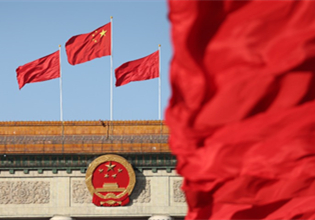World's largest green hydrogen-ammonia project starts operating in Inner Mongolia
The world's largest green hydrogen-ammonia project – the Envision Chifeng zero-carbon hydrogen-ammonia project – was launched in Chifeng in North China's Inner Mongolia autonomous region on July 8.
This milestone marks a significant breakthrough for China in zero-carbon hydrogen-ammonia technology and is expected to accelerate the global industrialization of green hydrogen and ammonia.
The project, developed and operated by global energy technology leader Envision Group, is located in the Yuanbaoshan Industrial Park. The first phase of the 1.52 million-metric-ton project, with an annual output of 320,000 tons, is now operational. Once fully completed, the project is expected to reduce global carbon emissions by approximately 9.12 million tons annually – equivalent to the yearly emissions of 15.2 million gasoline-powered cars.
Zhang Jian, chief hydrogen engineer of Envision Group, explained that the system is powered by AI and is the world's largest 100 percent renewable energy-based electricity system. It efficiently integrates wind, solar, storage, and hydrogen-ammonia-methanol production.
Like a seasoned "energy conductor", the system senses and forecasts renewable energy fluctuations in real time and uses AI to coordinate production units with second-level precision. This ensures optimal synchronization between energy supply and demand, solves bottlenecks in key material production, and significantly reduces both energy consumption and costs – offering a scalable and replicable solution for the global zero-carbon hydrogen-ammonia industry.
Envision Group Chairman Zhang Lei highlighted that the green ammonia produced by the project offers strong cost advantages and is one of the most economical large-scale energy storage solutions available. A single ammonia tank costing just 150 million yuan ($20.89 million) can store energy equivalent to 100 million kilowatt-hours – whereas storing the same amount of electricity directly would require 60 billion yuan in infrastructure.



 Print
Print Mail
Mail





